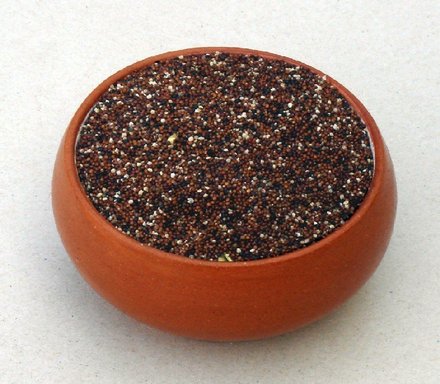Whey Protein and Amino Acid Diet Plan
Drink Protein Shakes After Weight Training
Recent research has shown that whey protein supplements that are fortified with added amino acids can help reduce fat while maintaining muscle mass. The research was carried out on obese elderly individuals who cannot exercise, however, the same rules can be applied to young and healthy people who are looking to reduce fat. You can read our page about the research below. If you exercise too, then all the better – you should lose weight faster. This research helped to remind us of two facts which have previously been covered here at MotleyHealth:
- Adding protein to a diet can help with weight loss
- If you follow a diet plan you will lose weight
Every year many people claim to have tried every diet plan and yet failed to lose weight. Harsh as it sounds, diets never fail, the problem is that people fail to diet properly. This was not the first piece of scientific investigate that set a strict diet plan for the volunteers to follow which resulted in a 100% success rate.
This diet requires you to consume a whey protein and amino acid meal replacement 5 times a day, with low GI solid food.
1250 Calories a Day
The diet consists of a total of 1250 Calories a day, and is therefore a LCD (low calorie diet). 850 Calories should be from the whey and amino acid meal replacement (5 servings of 170 Calories) and 400 Calories from solid food. Low GI vegetables are recommended as they will generally be nutritious and have a higher fiber content to aid digestion and healthy bowel movements.
The whey and amino acid component of the diet serves two roles:
- It reduces muscle wastage that commonly results from low calorie dieting
- It helps to reduce appetite
If you just reduce calories, or worse, fast for weight loss, then as well as losing body fat you will also lose vital muscle tissue. Muscle is essential for health and activity and also helps to maintain good metabolism. A combination of whey and amino acid supplement has been shown to significantly help prevent muscle wastage. Also, when we consume proteins the body releases a hormone called PYY. The PYY hormone helps to reduce hunger and this helps you to reduce calories more naturally (you do not crave food).
EAAMR, Essential Amino Acid Meal Replacement
The study called the meal replacement formula the EAAMR, which is short for Essential amino acid meal replacement. While there is not a commercially available product that exactly matches these requirements, here is what you should aim to take 5 times a day (all calorie figures have a small margin of error):
- Total Calories: 170
- Protein: 7 grams (28 kcal)
- Amino Acids: 6 grams (24 kcal)
- Total Fat: 4 grams (36 kcal)
- Cholesterol: 5 mg
- Sodium: 220 mg
- Potassium: 460 mg
- Total Carbohydrate: 22 grams (88 kcal)
The main essential amino acids which are often found in fitness supplements:
- L-Leucine
- L-Isoleucine
- L-Valine
Some whey protein supplements already have essential amino acids added. You can also purchase separate whey protein and amino acid supplements and combine them.
Whichever product you chose, weigh / measure it out so that you are consuming 170 Calories with each of the 5 daily portions. The label should give a calorie count per scoop or per 100 g which you can use to work it out. If you struggle, just ask below.
Low GI Fruits and Vegetables
The other 400 Calories a day are from solid foods. Ideally salad vegetables, pulses, fresh fruits, nuts and seeds. Avoid all baked foods, anything with flour or rice as these all provide a lower fiber to calorie ratio and generally result in blood sugar levels increasing and excess sugar being converted to fat.
5 Meals a Day
You need to consume 5 meals a day, each meal consisting of 170 Calories of protein / amino acid supplement and 80 Calories of solid food. You can eat a different sold food for each meal to keep it more interesting. Oats for breakfast is a good option, salad or a soup for lunch times, maybe some pulses or nuts in the evening.
There should be no cheat days on this diet plan if you wish to lose weight at a steady rate. You should also do some exercise every day.
The study group participants lost around 7% of their total body weight during an 8 week period. As an example, the average weight of a subject before the diet plan was 92.3 kg (203 pounds) and they lost on average 7.8 kg, or 17 pounds, in 8 weeks. This represents almost 1 kg a week weight loss (2.4 pounds) with minimal muscle wastage.
Timing of Meals
The timing of the meals is not vital, although if you spread them out well during the day you will manage your hunger better. If you are exercising then it is a good idea to take your meal an hour before to ensure you have plenty of energy. Here is a suggested plan:
- 8am – first 170 Calorie EAAMR with 80 Calorie solid food
- 12pm – second 170 Calorie EAAMR with 80 Calorie solid food
- 4pm – third 170 Calorie EAAMR with 80 Calorie solid food
- 7pm – fourth 170 Calorie EAAMR with 80 Calorie solid food
- 8pm – Exercise for around 45-60 minutes
- 9pm – fifth 170 Calorie EAAMR with 80 Calorie solid food
The first meals are 4 hours apart and then the meals in the evening are closer. You may wish to change these timings to suit your day better.
The most important factor is to ensure that you do not sneak over your daily calorie limit. In the study the subjects were prescribed and administered their meal plan, you will need to do it by yourself. So measure carefully – never guess portion sizes. Any questions? Ask below.
Research: Whey Protein and Amino Acid Supplements Help Reduce Fat
A new piece of research has demonstrated that whey protein with amino acids may be more important for weight loss than we first realised. While whey protein is the supplement of choice for many bodybuilders and some athletes, it was assumed that its role did not extend beyond helping to build bigger and stronger muscles. But this idea has just been changed.
One of the reasons that we have at times in the past deterred people from taking whey protein is because many people who are very overweight and unfit need to drastically reduce their daily calorie intake. However, as soon as you suggest a weight training program with protein supplements there is a real risk that someone will simply start consuming too many additional calories and gain even more weight. An average whey protein drink contains around 140 Calories and someone new to fitness may not even burn that off in their first workouts. The result is additional fat along with the new muscle tissue.
But, the new research has shown how whey protein, when taken by elderly and obese individuals, can aid fat loss without causing muscle wastage. Muscle wastage is especially problematic for older people who are not exercising, and this makes dieting a real problem. Let’s look at the research.
The Research
The research was carried out by health scientists from the University of Arkansas for Medical Sciences. The purpose of the research was to examine if the health benefits of reducing adipose tissue (fat) outweigh the mortality risks of muscle loss in the elderly population. When elderly people lose muscle tissue they become weaker, and this is often irreversible and linked to earlier death. The researchers have also shown that whey protein and amino acid supplementation can help to maintain muscle mass, even in individuals who are bedbound.
The study was performed by putting 12 elderly people on one of 2 different 8 week calorie restrictive diets. One was the EAAMR, a whey protein + essential amino acid meal replacement designed by the study, the other was a competing meal replacement. Both diets consisted of 800 Calories from meal replacement plus 400 Calories of solid food. The EAAMR contained 9 g of protein and 6 g amino acids, and the CMR contained 14 g protein and no amino acids. See table below for full nutritional facts.
Meals were split into 5 servings a day, each being 170 Calories. Both were designed to result in 7% weight loss during the period. Acute changes in skeletal muscle were measured and muscle protein fractional synthesis rate (FSR) recorded.
- Nutrition Facts for EAAMR and CMR – Source: Nutrition Journal, 2012, 11.105
After the 8 weeks all subjects who completed the program lost 7% of their bodyweight (N.B. further evidence that it really is all about calorie restriction, don’t let anyone tell you otherwise!). This included both obese men and women, each with a BMI of around 31. The study found that use of the EAAMR promoted fat loss while maintaining most muscle tissue. There was still some muscle wastage, but not a significant amount.
“… administration of EAAMR did promote a significant increase in skeletal muscle protein FSR.”
What Does This Research Mean For Younger People?
Whilst weight loss was similar and as expected in both groups, those who took the amino acid and whey protein supplement lost more fat and less muscle.
If you are trying to lose weight and also exercising, which is the best way to approach weight loss, then ensuring that your diet consists of plenty of amino-acids and whey protein will ensure that your body sheds fat and retains (or builds) muscle. This is certainly preferential.
While additional protein is not actually needed by a majority of people who are exercising for fitness, it can help to boost fitness (by building more muscle) and reduce fat weight.
Limitations of the Study
The study was limited in that only a small number or obese, elderly people were examined. We cannot be sure how younger individuals who are just overweight (BMI of 25 to 29.9) will respond to the same diet regime.
What We Know
However, what we do know is that:
- Calorie restricted diets always work – although some result in too much muscle wastage
- Whey protein supplements reduce muscle wastage
So, if you are keen to lose weight, are happy to exercise and can also follow a strict calorie controlled diet, then a daily whey supplement (best taken after weight training) should assist your weight loss. If, and only if, you do not exceed your daily calorie requirements for weight loss. See our table on daily calorie needs to determine what that is. The moment you consume too many calories you will stop losing weight and will probably gain fat.
Reference
- “Whey protein and essential amino acids promote the reduction of adipose tissue and increased muscle protein synthesis during caloric restriction-induced weight loss in elderly, obese individuals” by Robert H Coker, Sharon Miller, Scott Schutlzer, Nicholass Deutz and Robert R Wolfe. Nutrition Journal 2012, 11:105 doi:10.1186/1475-2891-11-105. Published: 11 December 2012. Full article (pdf).
-
How to Avoid Overeating During the Holidays
The holiday seasons are coming soon… Many of us will be getting
-
The Best 5 Crunch-less Abs Exercises For A Flatter Stomach In Less Time
If you never do another crunch again, you will end up saving a lot of
-
Once Again The Benefits Of Diet And Exercise
Everyone knows that the best way to lose weight is through diet and ex
-
Drink Water To Lose Weight
Do you believe that drinking lots of water will help you lose weight?
-
Losing Weight Naturally – 4 Steps Of Mental Preparation…
It really just doesnt seem worth the bother at times does it? This
-
How To Choose A Gym
One common phenomenon in the United States today is that many people a
- DON'T MISS
- Exercise To Lose Fat Fast
- Snack Tips to Burn Fat
- NutriSystem Food - Is It The Right Diet For You?
- The Disadvantages of the “Quick Weight Loss Diets” Trend
- Should You Join An Online Weight Loss Program?
- Stay Motivated With Your Fat Loss Programme with these 7 Tips
- 5 Ways To Make Protein Benefit You
- The Only Diet Youll Ever Need
- Frequently Asked Questions About Weight Loss And Diets
- Tips On How To Lose Weight




